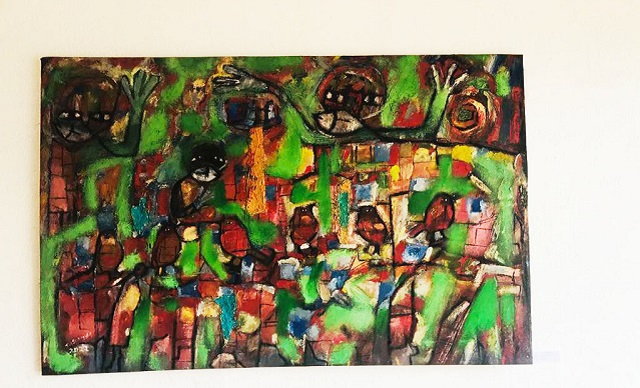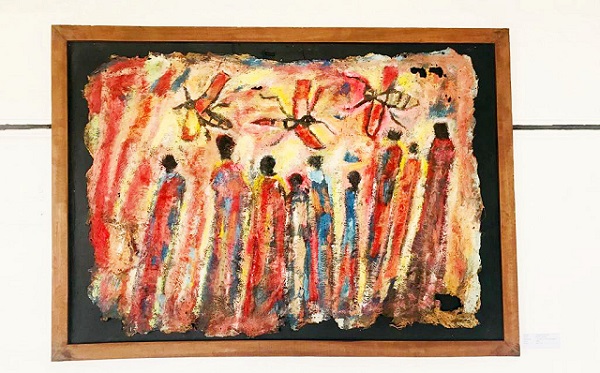
The exhibition Recycling and Environmental sustainability suggests the need to preserve the environment and humanity
Kampala, Uganda | DOMINIC MUWANGUZI | There’s no doubt that Tusiime Mathias as an artist continues to make heads roll on the Uganda Contemporary Art scene. His latest Solo exhibition Recycling and Environmental Sustainability has further etched him as one the most outstanding innovative and hardworking artists of his generation. As is the norm in many of his exhibitions in recent years, the self propelled artist with a humble background in art, delves into the theme of recycling and environment sustainability to tackle the subject of artistic innovation and research, while reminding everyone of the need to preserve the environment we live in. Interestingly, his message is timely given the fact environment safety and preservation dominates many conversations globally today.
Tusiime’s media in the exhibition is primarily barkcloth paper which is a representation of both recycling and environment sustainability. Barkcloth paper is an innovation of the artist which is produced from regular barkcloth and through a rudimentary process of soaking the fabric and beating it down, a highly textured material is created. The focus on working with such organic material provides deeper conversations about his art beyond what is easily palpable in the exhibition: the process of recycling and environmartal sustainability. Barkcloth fabric will also bring into perspective the subject of materiality in art which has always been a central subject of discussion by artists working with traditional material. While Tusiime doesn’t originate from Buganda, a central region of Uganda where barkcloth features prominently in the traditional social life of the citizenry, his relationship with the fabric is legitimated by his routine interaction with the people of the region.

The artist chooses to work with barkcloth to deliberately draw his audience to his work. Perhaps, tackling the subject of environment sustainability with another material would not have sufficed. Barkcloth is largely known in the academia as a sustainable fabric because of its organic quality and the ability to preserve the tree ( Mutuba) from which it is harvested. One doesn’t have to cut down the tree to harvest the fabric but will skillfully cut off the bark from the tree trunk. As the artist works with this fabric in its improved form, he is already giving it a new identity. Such identity is critical in its preservation as a canvas that can be painted on. Equally, its occupation of the gallery space, where it is showcased as part of the work, implicitly illustrates the preservation of the traditional into the modern.
The innovative approach exhibited in this new body of work says more about Tusiime as a keen observer of the community he lives in and its immediate surroundings. The more than 15 paintings carry nuanced feelings and emotions of himself as both an artist and individual. As he goes about his daily routine of working at Makerere School of Industrial and Fine art, he picks inspiration for his art from the art lecturers and students. Equally, the endless hustle and bustle in his neighbourhood of Nassana provides fertile grounds to experiment with the unusual which he blends in his artistic expeditions. Noteworthy, the palette and subjects in his paintings have a quality of uneasiness that may remind one of the chaotic scenery of such neighborhoods.
Tusiime’s work can best be described as a social commentary on everyday life. While the artist tackles the subject of recycling and Environmental sustainability in these works, he delicately wants to communicate the need to preserve our humanity in a fast changing world filled with selfish interests. Luckily, Tusiime has already achieved this through his natural trait of love and kindness. If we borrow a leaf from him and pay attention to want his art is saying, we shall definitely save our planet.
The exhibition is showing at Makerere Art gallery located within the School of Industrial and Fine Art.
 The Independent Uganda: You get the Truth we Pay the Price
The Independent Uganda: You get the Truth we Pay the Price


